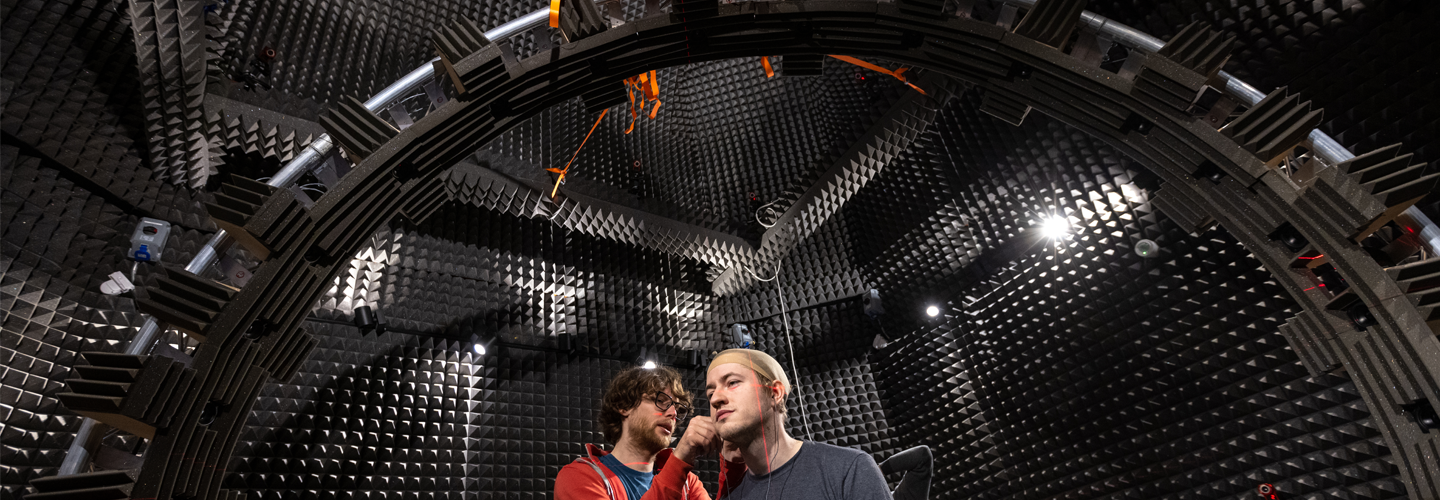


SONICOM Partners

University of Malaga
Spain
For almost 20 years, the DIANA Research Group at the University of Malaga have been working with Virtual Reality and 3D interaction, Multimodal Human-Machine Interaction and Electronic System Design. They were partners of the INTUITION Network of Excellence and founding members of the EuroVR association.
The University of Malaga (UMA) was founded in 1972 and has grown quickly since then. Today, it has more than 2,400 professors, 35,000 students, 62 degrees, 53 Master’s Programmes and 278 research groups. Together with the University of Sevilla, it was recognized as a “Campus of International Excellence” in 2012, under the name Andalucia Tech.
Role in SONICOM
The UMA team will lead WP3, focused on the integration of results coming from WP1 and WP2 into the SONICOM Framework, which will be used in WP4. They will also participate in WP1 and WP2, contributing to those tasks related with speech intelligibility and spatial audio for VR/AR with special focus on collaborative virtual environments. Finally, the team will be in charge of the adaptation of the Binaural Rendering Toolbox, developed in WP3 into the SONICOM ecosystem, released in WP5.
Team members
Arcadio Reyes-Lecuona is an Associate Professor and the head of the DIANA research group. He is also both a Telecommunication Engineer (BSc + MSc) and Psychologist (BSc+MSc) as well as the PI in three national projects and five European projects in the field of VR, 3D interaction and spatial audio. Dr Reyes-Lecuona is the coordinator of the technical development of the 3D Tune-In Toolkit and a member of both the steering committee of the Spanish association of Human Computer Interaction (AIPO) and of the executive committee of the EuroVR association.
Luis Molina-Tanco is a Lecturer at University of Malaga and a researcher in the DIANA group. He is a Telecommunication Engineer (BSc+MSc) who worked in the telecommunications industry and then went back to academia to undertake a PhD in Human Motion Synthesis from Captured Data at the Centre for Vision, Speech and Signal Processing at University of Surrey (UK). In 2003, Dr Molina-Tanco joined the University of Malaga, working on several projects in the fields of HCI and pattern recognition, spanning applications in telemedicine, computer animation, robotics and virtual reality. He is one of the developers of the 3D Tune-In Toolkit.
María Cuevas-Rodríguez is a Researcher at University of Malaga and part of the DIANA research group. She is also a Telecommunication Engineer (BSc+MSc). Since 2010, she has been involved in national and EU funded projects in the fields of Robotics, Virtual Reality and 3D audio. During her PhD, she has accomplished two internships, one at Imperial College London (UK) for 3 months and another at the audio team of Facebook Reality Lab (Seattle, EEUU) for 6 months. Currently, she is in the last year of her PhD degree. She is one of the developers of the 3D Tune-In Toolkit.
Daniel Gonzalez-Toledo is a Researcher at University of Malaga and part of the DIANA research group. He is a Telecommunication Engineer (BSc+MSc) and has worked at IBM as a testing engineer. Since 2013, Gonzalez-Toledo has been involved in EU-funded projects in the fields of Virtual Reality, working in 3D audio, 3D interaction with reduced DoF, and Haptic Virtual Reality for training. He is also one of the developers of the 3D Tune-In Toolkit.
